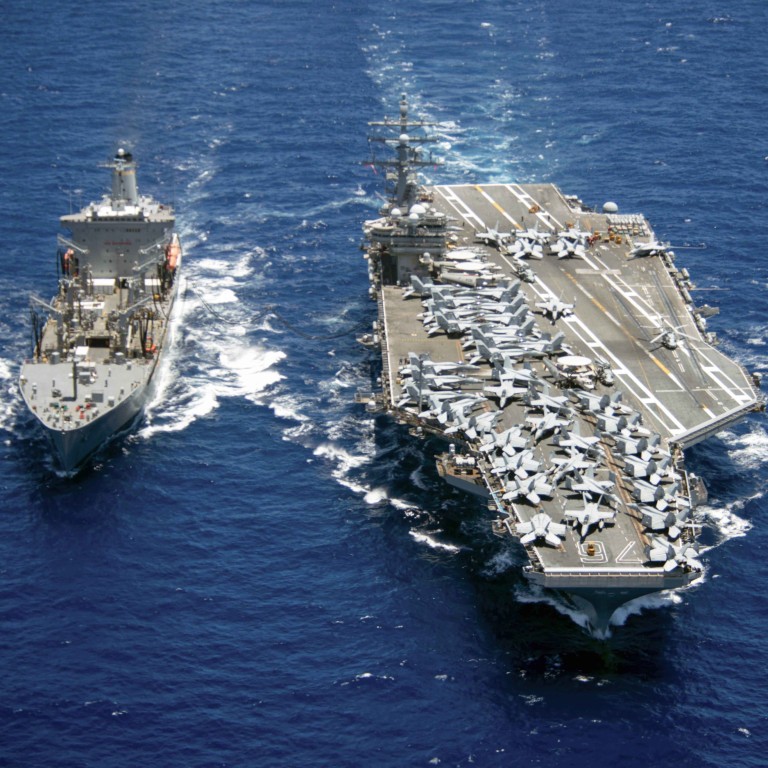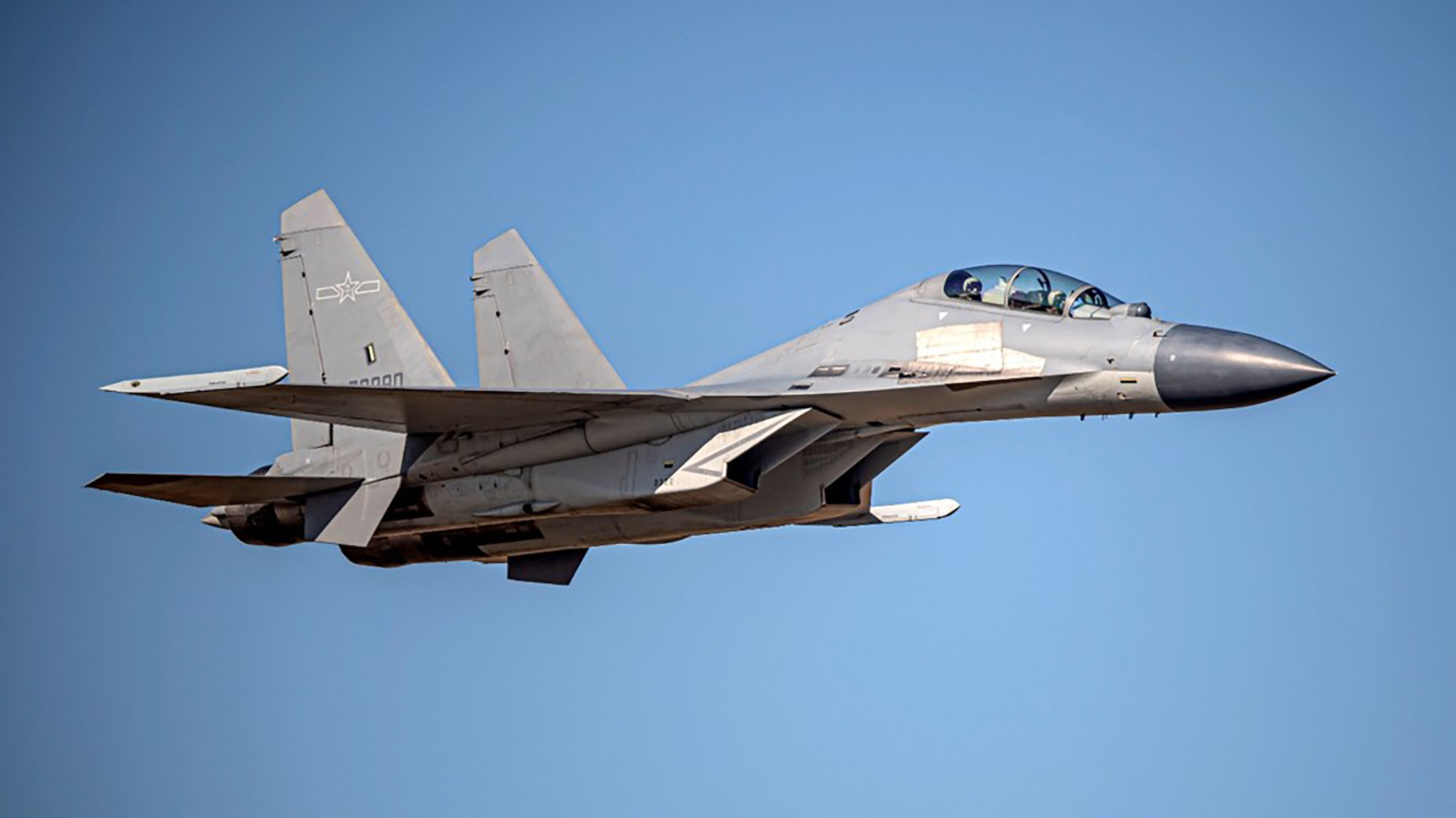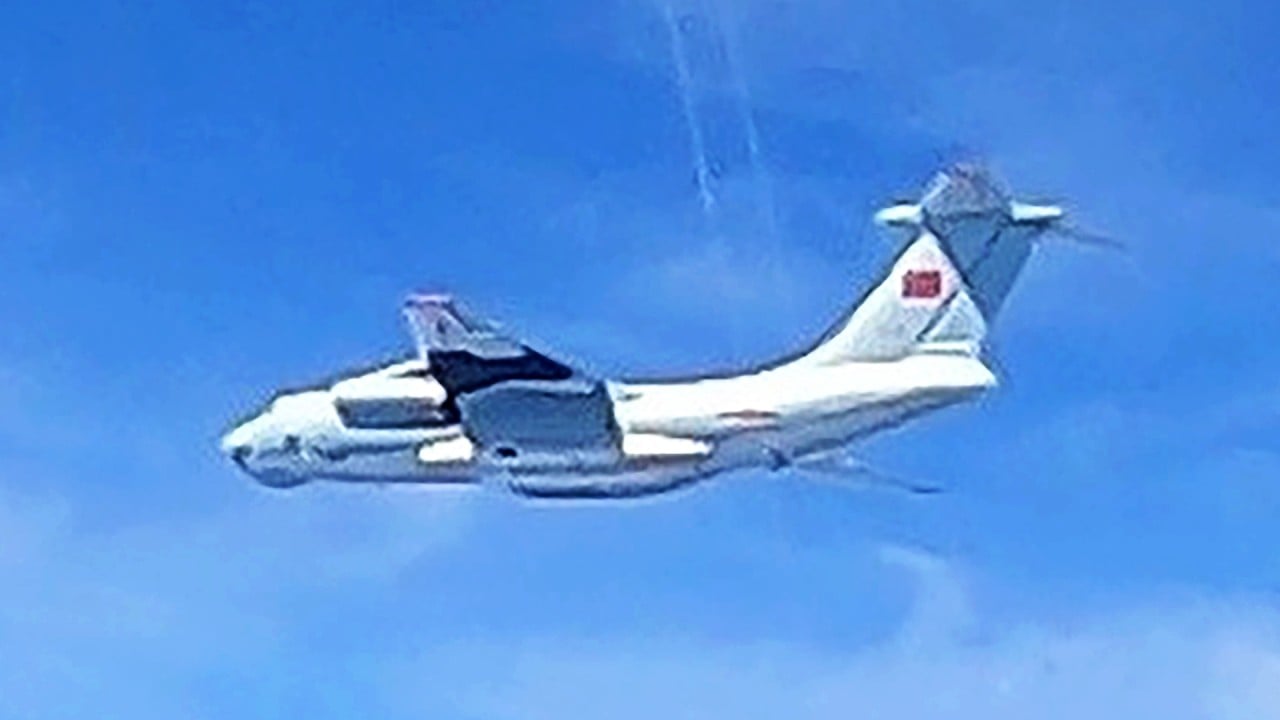
PLA warplanes enter Taiwan air zone after US drills in South China Sea
- Chinese air force sends 28 planes into air defence identification zone in what was seen as a warning to United States
- It came after US strike group held exercises in disputed waterway ahead of regional talks aimed at easing tensions
Observers said the show of force by the People’s Liberation Army, its largest yet, aimed to send a warning to the United States over the exercises, which were conducted ahead of this week’s defence talks with Southeast Asian nations and China.
Taiwan’s defence ministry said the warplanes – including fighter jets, bombers, an anti-submarine aircraft and an electronic warfare plane – entered the southwest of the self-ruled island’s ADIZ.
“In response, [Taiwan’s] air force scrambled jets, issued radio warnings and deployed air defence missile systems to monitor the activities of the planes,” the ministry said in a statement.
It was the fourth time PLA planes had entered Taiwan’s ADIZ this month, the ministry said.

“The path of the PLA planes showed that they were flying towards the Bashi Channel,” said Su Tzu-yun, a senior analyst at the Institute for National Defence and Security Research, a government think tank in Taipei.
On Monday, the USS Ronald Reagan carried out maritime security operations, strike exercises and coordinated tactical training in the South China Sea as part of America’s “routine presence” in the region, the US Navy said.
Rear Admiral Will Pennington, commander of the strike group, said the waterway was “pivotal to the free flow of commerce”, and that the US would work with allies and partners to “provide full spectrum support to key maritime commons and ensure all nations continue to benefit from a free and open Indo-Pacific region”.
South China Sea rivals agree to set up hotline ‘to cope with emergencies’
Beijing claims the vast majority of the South China Sea and its disputes with neighbouring countries including Malaysia, the Philippines and Vietnam over those claims have been a long-standing source of tension in the region.
The latest US exercises came ahead of a meeting of Asean defence ministers on Tuesday to discuss issues in the South China Sea, and an expanded meeting with the bloc on Wednesday that will include China, the US, Japan and India.
The Association of Southeast Asian Nations also held talks with China last week on the long-delayed code of conduct in the waterway, and said discussions would resume in July, while flagging that the process may not be finished by the end of the year.
Washington has repeatedly raised concerns over Chinese militarisation of the South China Sea, and in late May sailed guided-missile destroyer the USS Curtis Wilbur past the disputed Paracel Islands against “unlawful and sweeping maritime claims in the South China Sea”. In April, both China and the US sailed aircraft carriers into the East and South China seas.



